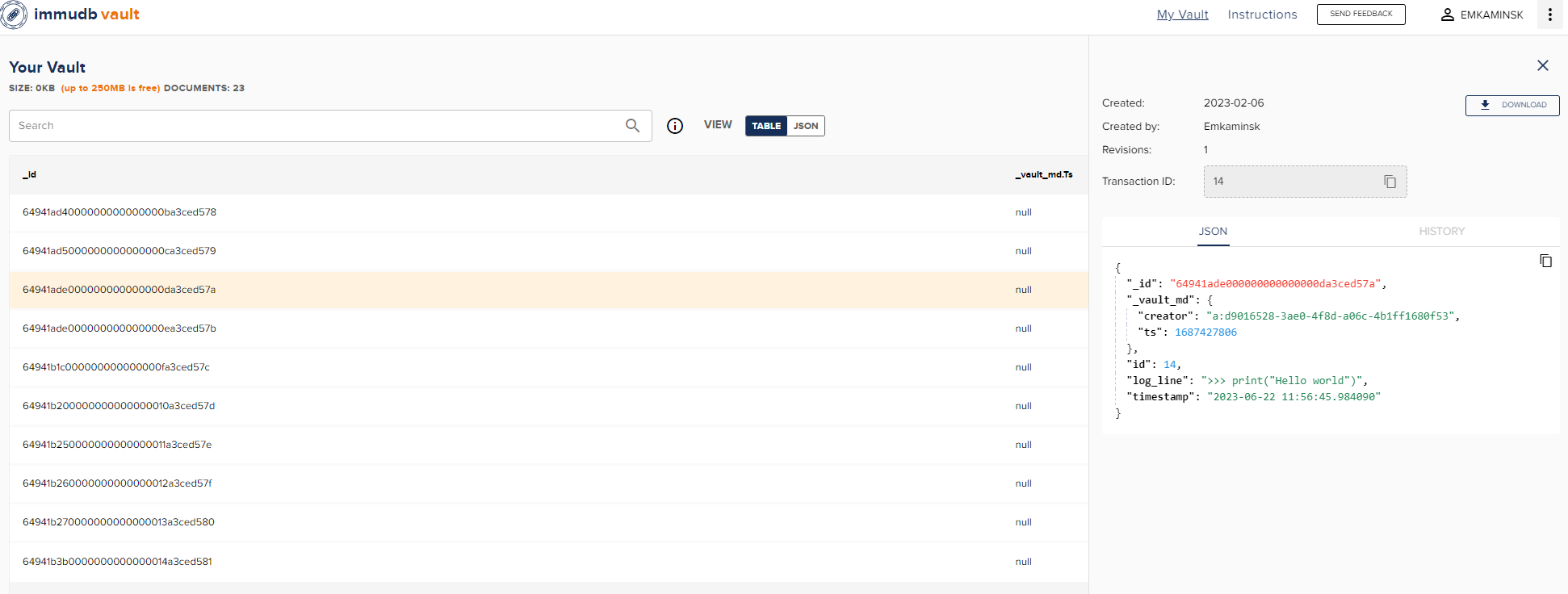Navigating the Transition from Amazon QLDB to immudb Vault
Recently, Amazon announced that it will be ending support for its Quantum Ledger Database (QLDB) effective July 31, 2025. For many organizations relying on QLDB for their immutable and transparent transaction records, this announcement has necessitated a search for viable alternatives. One such alternative is immudb Vault, an open-source solution that offers similar benefits with some unique advantages.
Understanding the End of Life for Amazon QLDB
Amazon QLDB has been a trusted service for many businesses, providing a transparent and immutable ledger for all changes to application data. The decision to end support for QLDB means that after July 31, 2025, the service will no longer operate, and any data not migrated will be permanently deleted. This end-of-life (EOL) notice has left many users concerned about how to ensure their data remains secure and accessible beyond this date.
Introducing immudb Vault
For those seeking a seamless transition, immudb Vault presents a compelling alternative. immudb Vault is an open-source, high-performance, cryptographically secure database that ensures the integrity and immutability of your data. Here’s a closer look at what immudb Vault offers:
-
Cryptographic Proof of Data Consistency: One of the standout features of immudb Vault is its cryptographic proof of data consistency. This ensures that once data is written, it cannot be altered without detection. This feature is critical for applications where data integrity is paramount.
-
Secure JSON Document Storage: immudb Vault allows you to store JSON documents securely. This is particularly beneficial for applications that manage large volumes of structured data and need to ensure its integrity over time.
-
REST API for Easy Integration: The simple REST API provided by immudb Vault makes it easy to store and retrieve JSON documents. This ease of integration means that developers can quickly adapt their existing applications to work with immudb Vault without significant changes to their codebase.
-
Open Source and Community-Driven: Being an open-source solution, immudb Vault benefits from a broad community of developers and users who contribute to its ongoing improvement and security of immudb. This community-driven approach ensures that immudb Vault remains a cutting-edge solution for data integrity and security.
Transitioning from QLDB to immudb Vault
For organizations currently using Amazon QLDB, transitioning to immudb Vault involves several steps. Here’s a brief guide to help you navigate this process:
-
Evaluate Your Data and Requirements: Before starting the migration process, take stock of your current data and application requirements. Identify the key features you rely on in QLDB and ensure that immudb Vault meets these needs.
-
Set Up immudb Vault: Begin by setting up an immudb Vault instance. You can find comprehensive documentation on the immudb website to guide you through the installation and configuration process.
-
Data Migration: Develop a strategy for migrating your data from QLDB to immudb Vault. Depending on the volume and complexity of your data, this might involve scripting or using data migration tools. Ensure that your migration process includes validation steps to confirm data integrity.
-
Update Your Applications: Modify your existing applications to interact with immudb Vault’s REST API. This step will likely involve updating your data access layer to use the new endpoints provided by immudb Vault.
-
Testing and Validation: Thoroughly test your applications to ensure they work seamlessly with immudb Vault. Validate that all data operations (reads, writes, updates) function as expected and that the integrity of your data is maintained.
Conclusion
The end of support for Amazon QLDB marks a significant transition for many organizations. However, with a robust alternative like immudb Vault, you can continue to maintain the integrity and security of your data. By taking a proactive approach to this transition, you can ensure that your applications remain reliable and your data remains secure well beyond the EOL date for QLDB.

